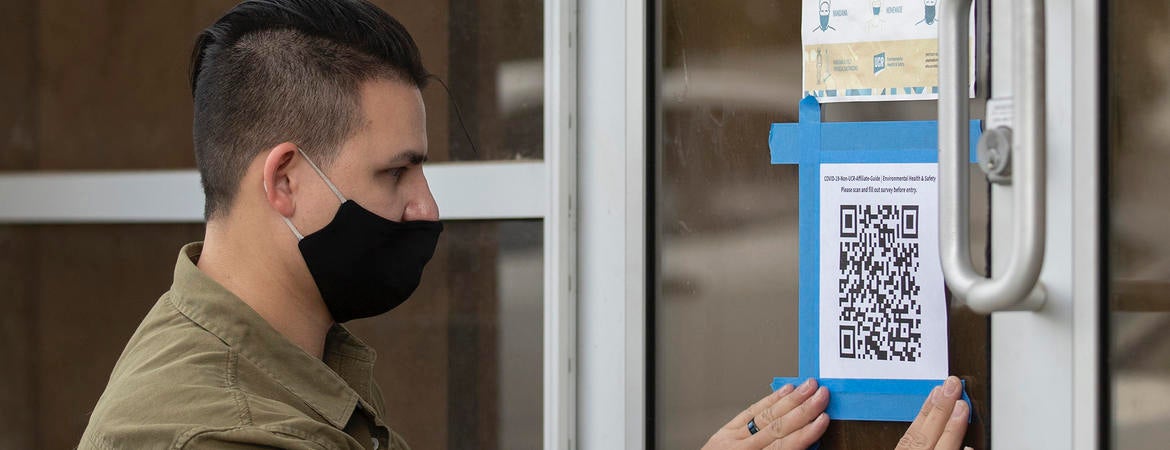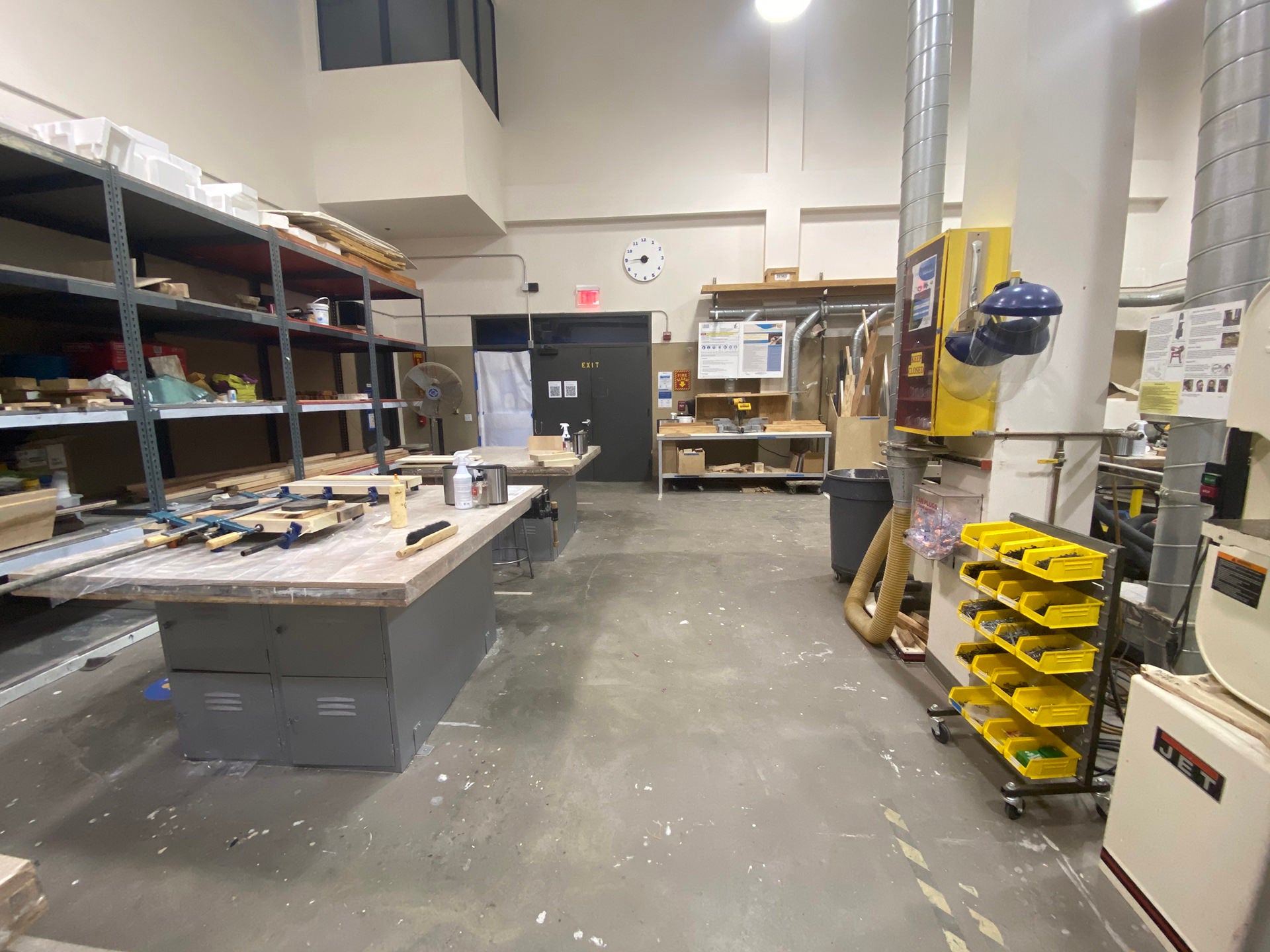College of Humanities, Arts, and Social Sciences

Saws, welders and sculpting tables are just some of the resources CHASS art students are used to having access to. Since campus closure in March 2020, the Department of Art has had to find new ways to support its students.
To create a space that mimics in-person learning, Art laboratory supervisors Andrea Hidalgo and Jason Gowans launched a website in August 2020 where art students can borrow equipment and supplies such as camera equipment, and paint.
In addition, graduate students are able to utilize QR code technology to reserve lab spaces on campus. Each lab and studio has a QR code at the entrance that grad students can scan with a smartphone to notify lab supervisors of their check-in. This system ensures that spaces are not overbooked.
“There was no system previously in the art department to assist students and we provided a solution to the problem,” Gowans said. “The new reservation system also provides information about what items are used and who used them so they can be sanitized and restocked. It also provides more accountability surrounding Covid-19 restrictions and guidelines.”
“I used the service last fall quarter to check out a camera and an iPhone dongle for a performance class. I've also used the service to pick up free art materials like paint canvases,” said Christina Kang, a fourth-year studio art major.
“It's hard to work from home when you're in a class like sculpture, because then your bedroom would have to become your workstation,” Kang said. “This service gives art students the opportunity to excel, focus on what you want to create, and make the most of your online classes.”

Each lab and studio has a QR code at the entrance that grad students can scan with a smartphone to notify lab supervisors of their check-in.
Hidalgo and Gowans worked hard to have the website running for the art students by last summer. Hidalgo and Gowans had to develop, test and troubleshoot a way to create separate QR codes for the Art department and graduate student studios.
“...the Art Department was one of the departments that had a quick return to campus in comparison to other departments,” Hidalgo said. “Our students and faculty really need to be on-site to use their studios, facilities, equipment, and to have staff assistance to be able to continue their research and art production. While EH&S and campus leadership were busy trying to develop guidance on a campus level, we were working on this at a department level.”
Additionally, they conducted extensive research on Covid-19 safety regulations in relation to Cal/OSHA, the state guidelines, Center for Disease Control guidelines, and an understanding of the needs of UCR students, faculty, and staff to create the QR codes and list of necessary items for check-out.
“It was a lot of research to understand how to keep our students, faculty, and staff safe at a time when there was still so much unknown about Covid-19,” Hidalgo said. “As a team, we really had to rely on each other, to do the research, make the best and safest decisions, get feedback, and be open to changes.”
With assistance and feedback from UCR art and art history department’s administrators, Susan Komura, Leslie Paprocki and Andrea Heraz, Hidalgo and Gowans were able to address concerns and efficiently release the website for official undergraduate and graduate student use.
The group is continuing to look at ways to further implement the QR code reservation process within their own departments that need to provide physical equipment and space to students. Hidalgo and Gowans are open to discussing with other UCR departments on how QRs can be implemented in their areas.
FEATURED PHOTO. Stan Lim/University Communications.
Gallery & Graduate Studio Manager Zaid Yousef posts QR codes that art students can use to reserve labs and borrow equipment. Utilizing QR codes was the idea of two CHASS lab supervisors, Andrea Hidalgo and Jason Gowans.